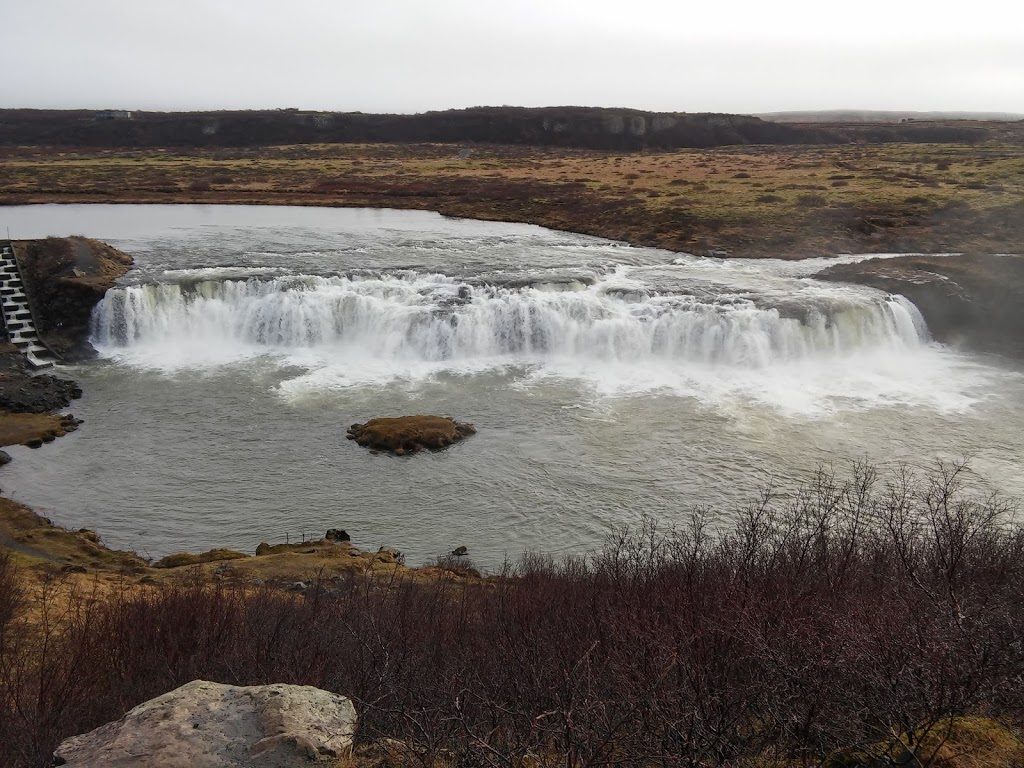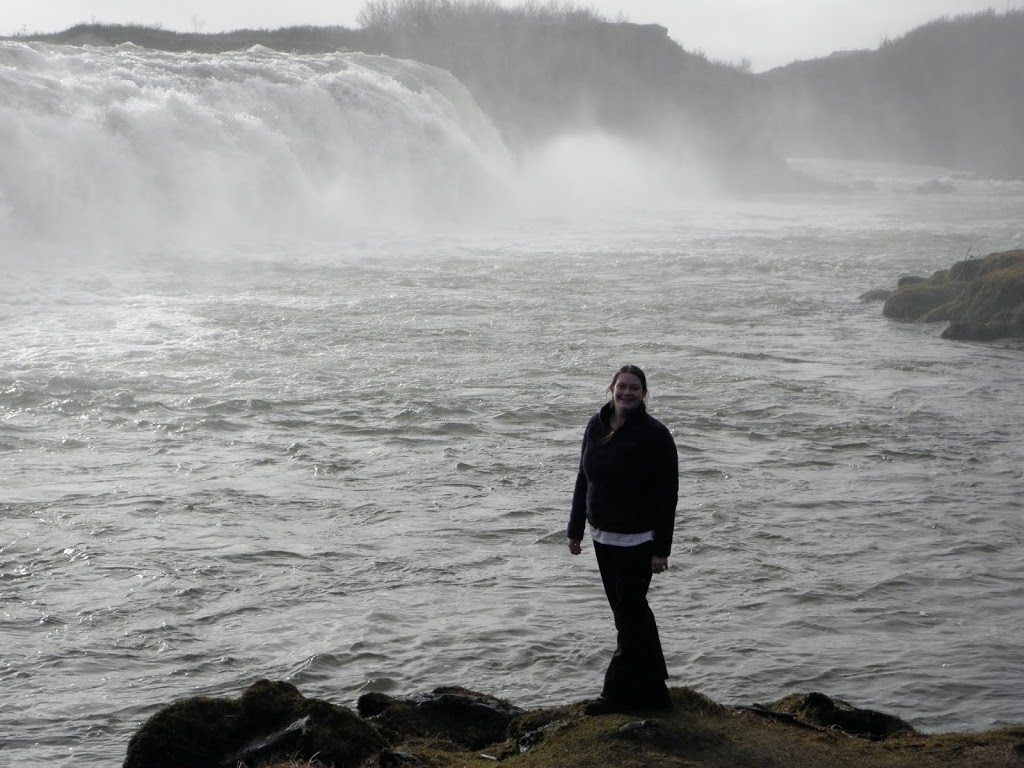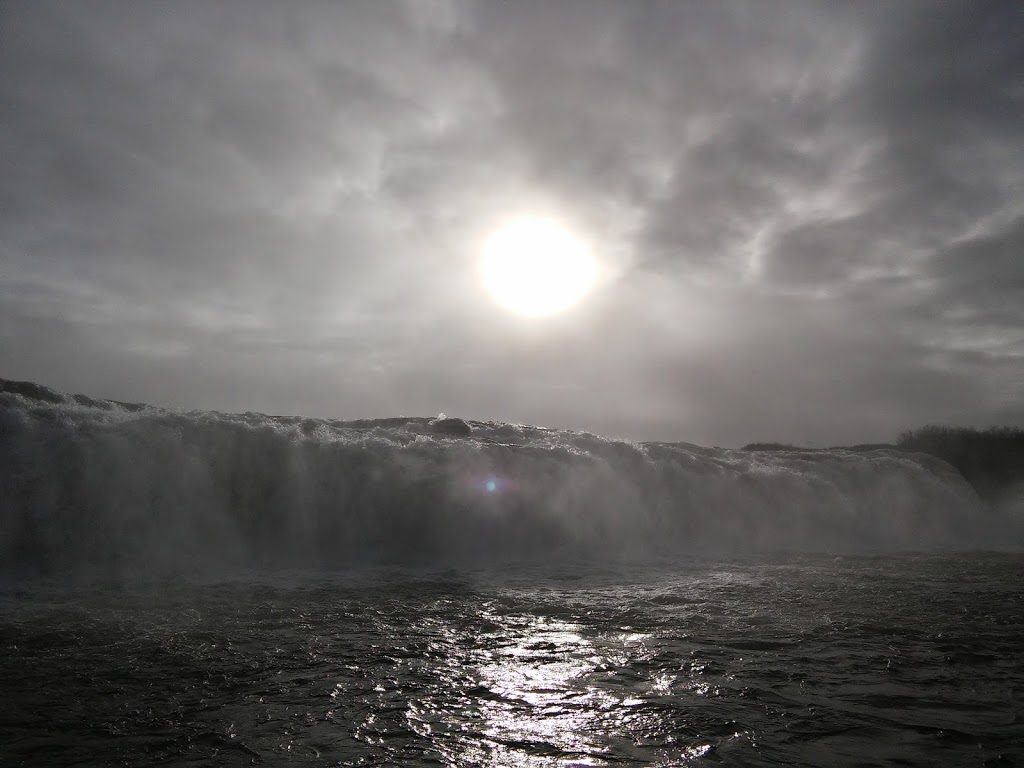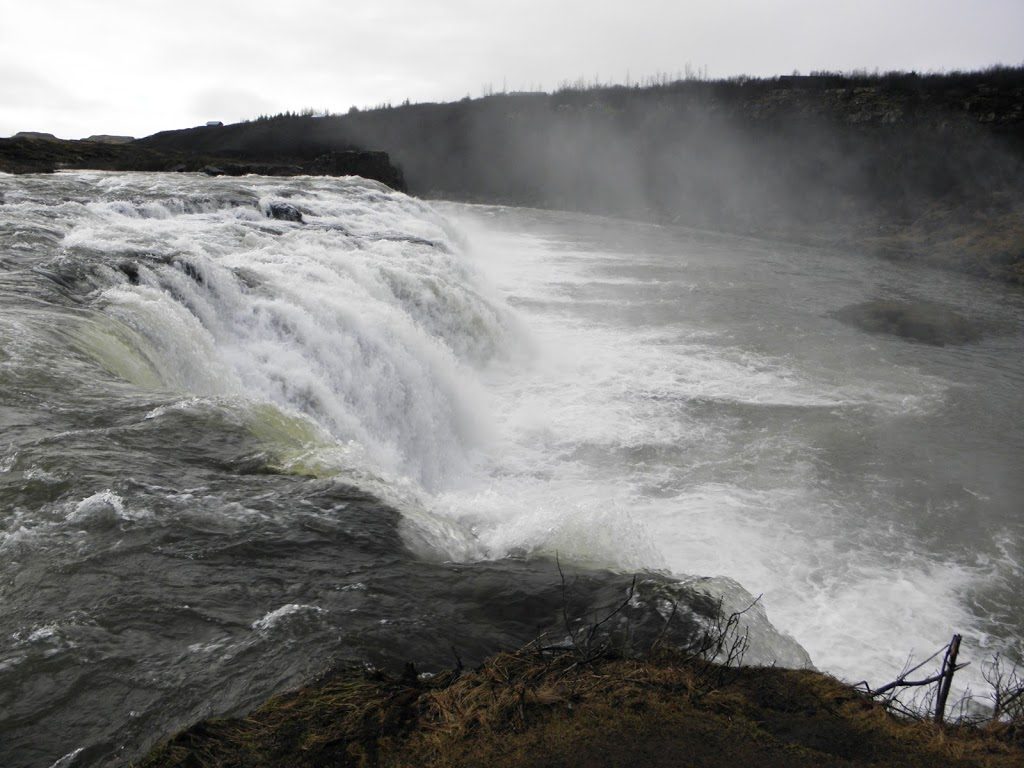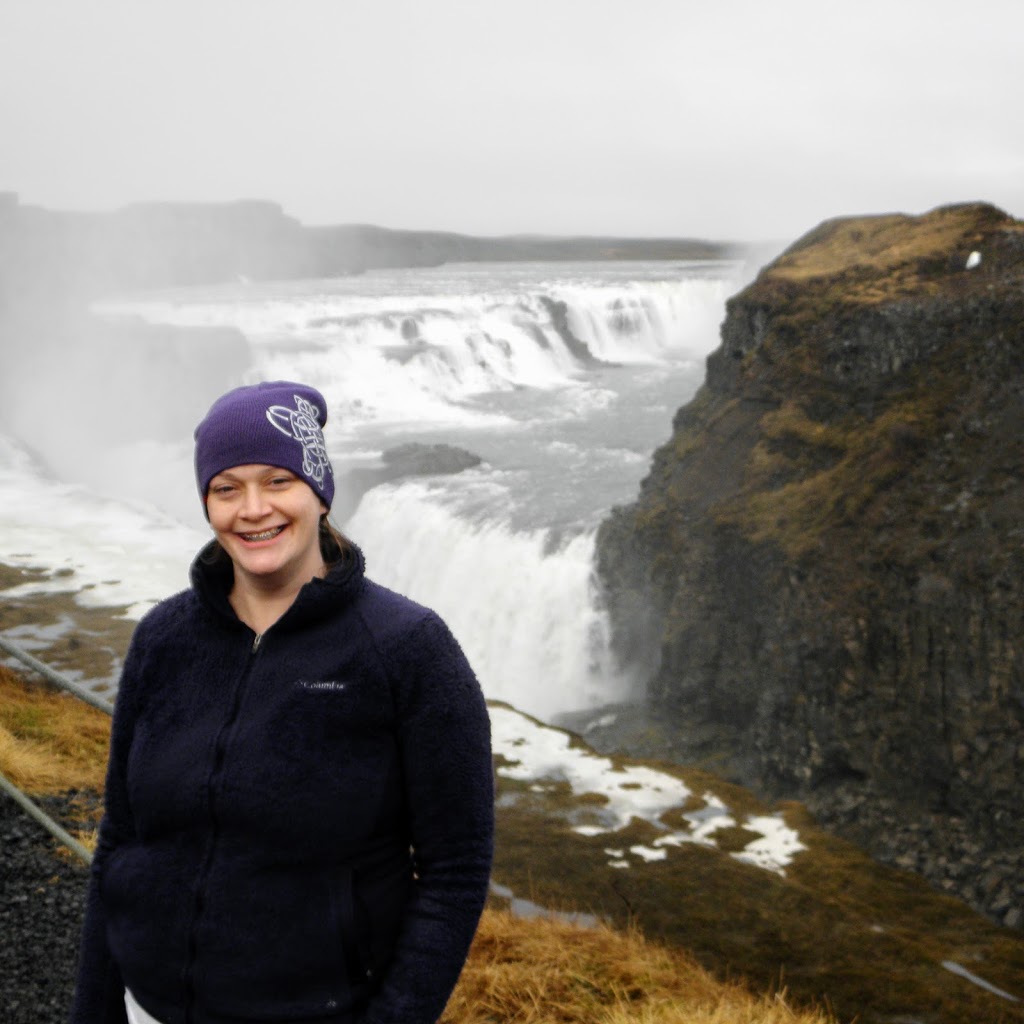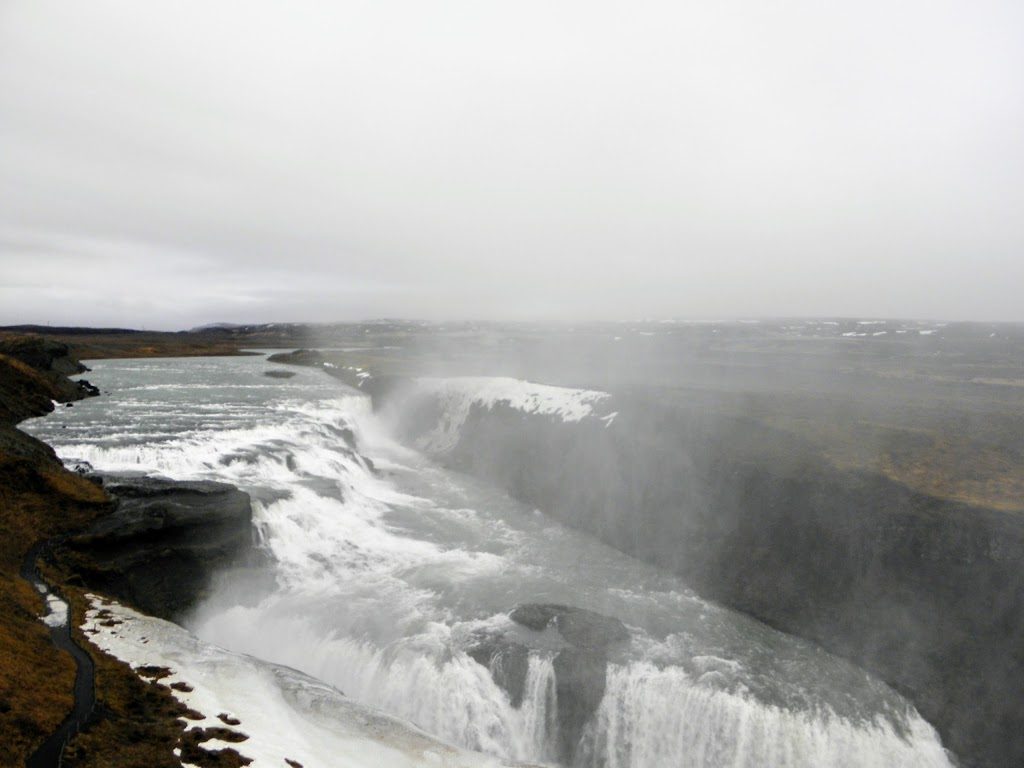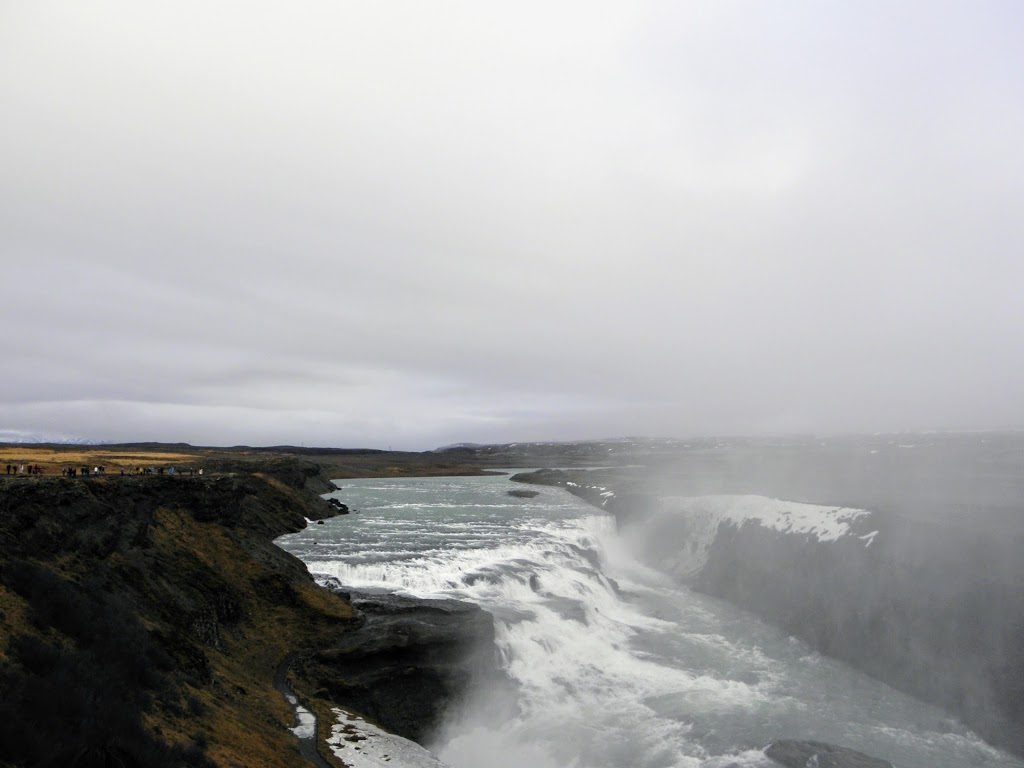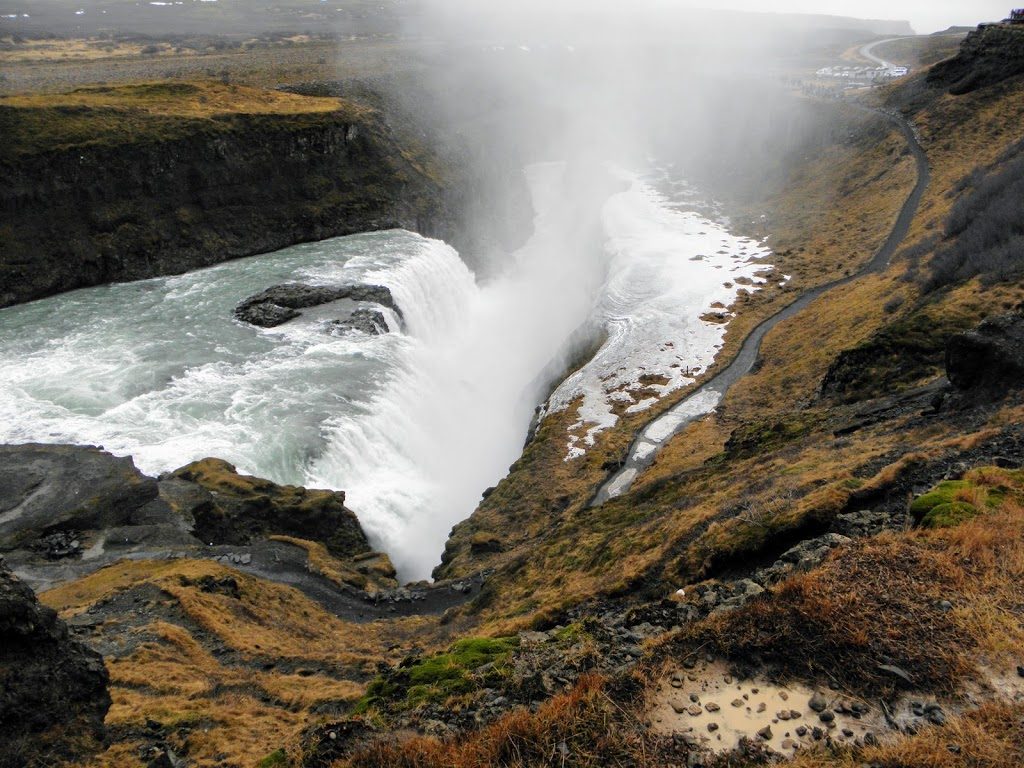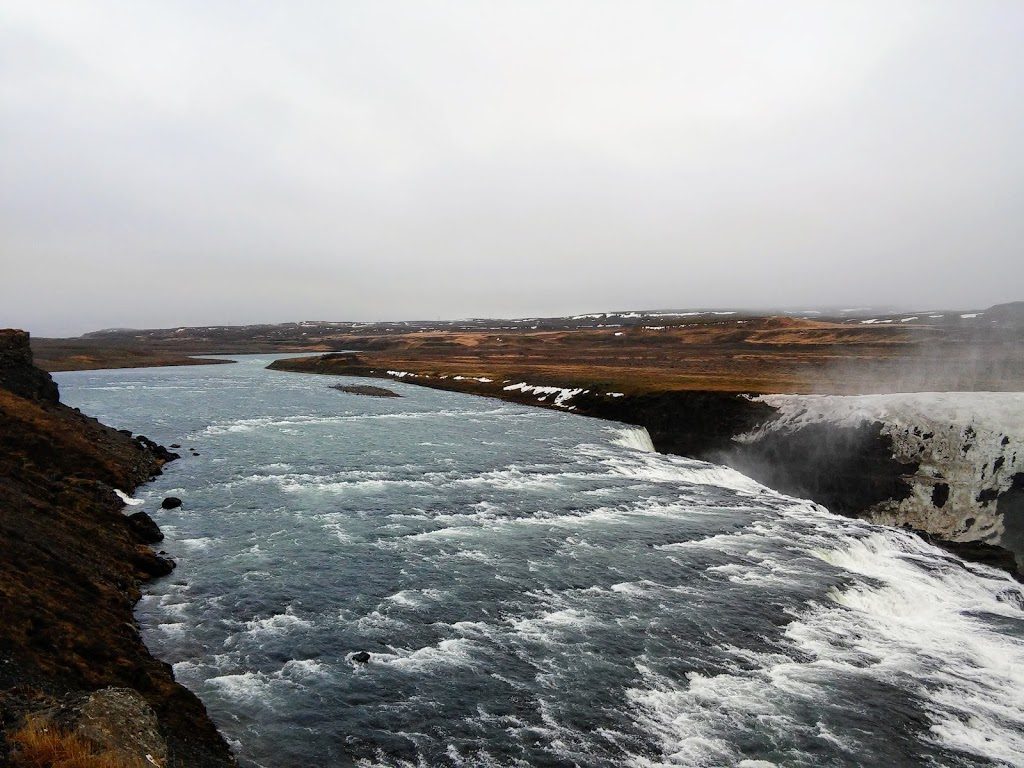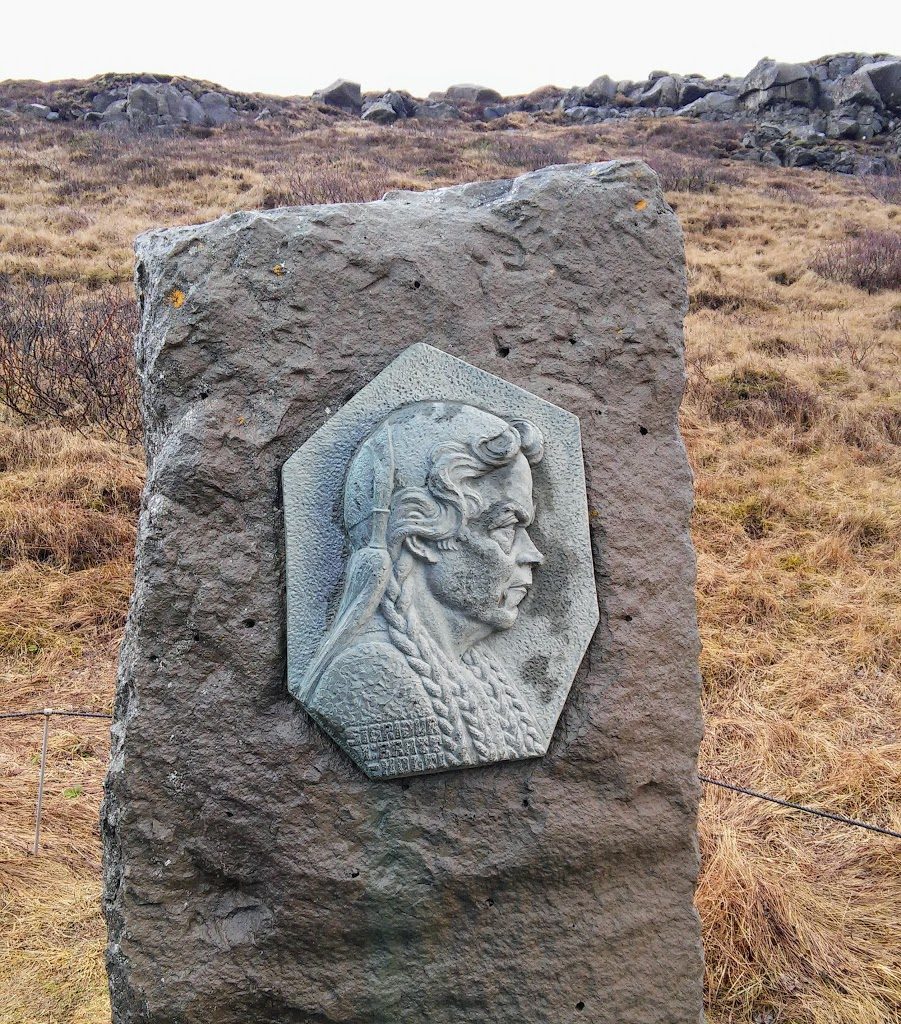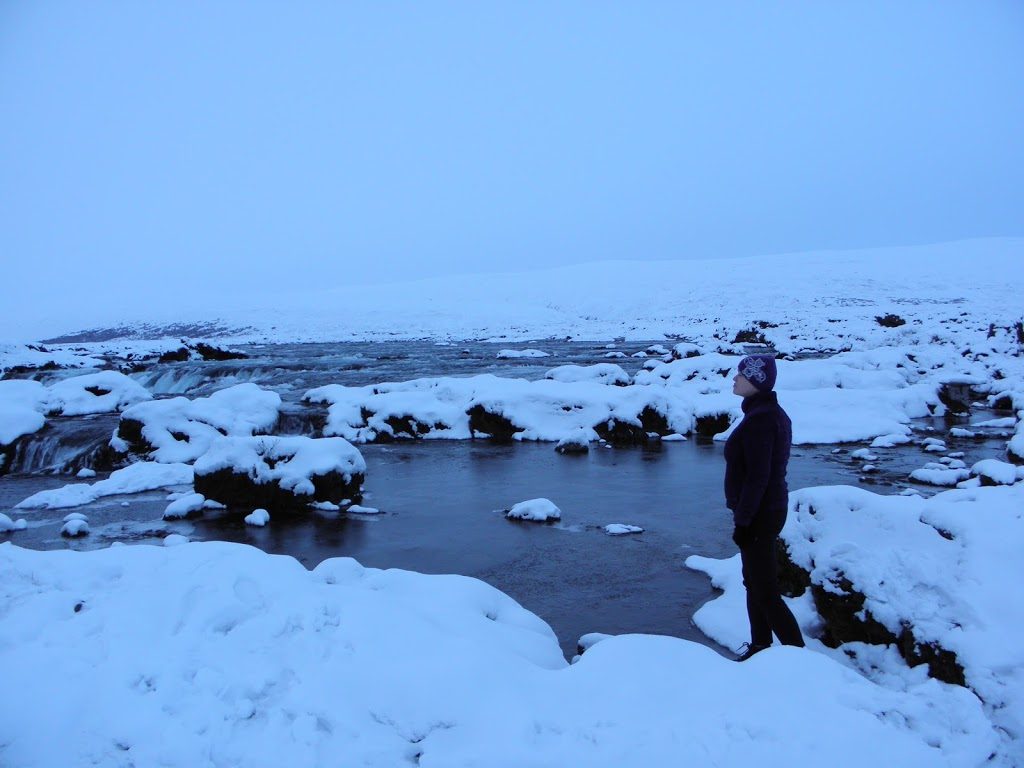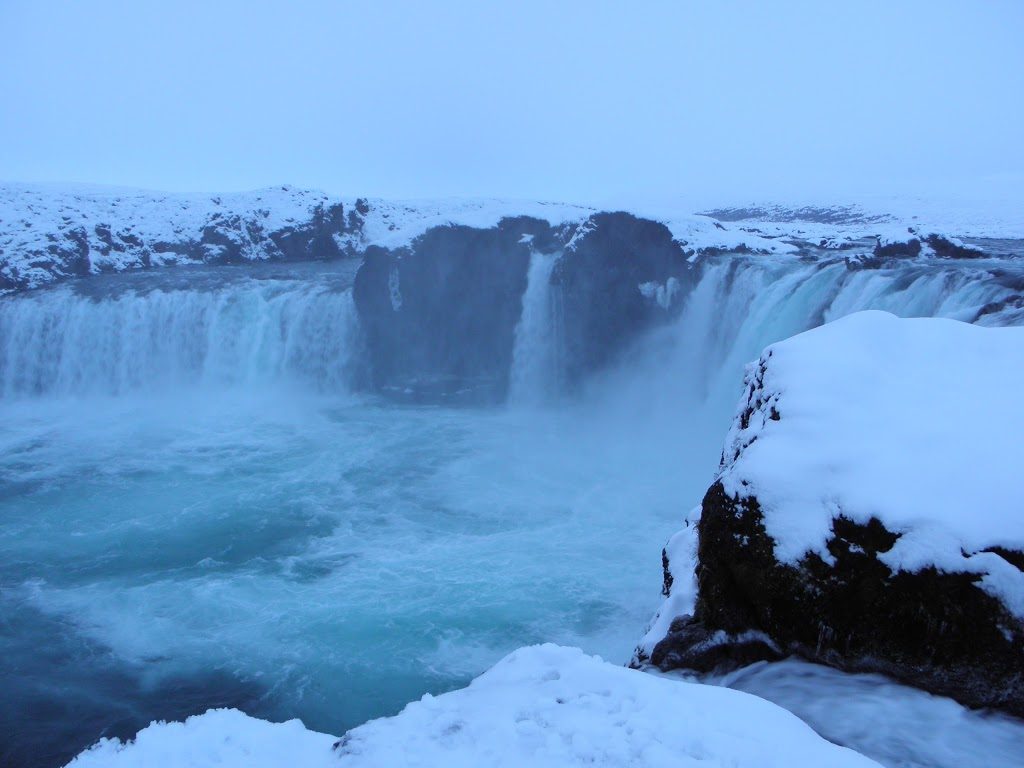Iceland Waterfalls
Faxi
“Faxi is a small but broad waterfall along the Tungufljót in an area of broad, flat farm lands where one would not otherwise assume there to be waterfalls. Here the river stretches to a width of about 300 feet and plunges in a broad fall of 22 feet in height, bypassed on the left by a small fish ladder.”
Faxi was a thrilling experience and had very few people visiting it while we were there. A nice detour, or perhaps I should say inclusion, to the Golden Circle.
Gullfoss
Welcome to Gullfoss
“Gullfoss and its environs was designated as a nature reserve in 1979 to permanently protect the waterfall and allow the public to enjoy this unique area.
The Environment Agency of Iceland is responsible for the management of the reserve.”
Where Does the Name Gullfoss Come From?
“It is likely that Gullfoss was given its name because of the golden evening hue which often colours its glacial water. Another theory is that the name was inspired by the rainbow which often appears when sunshine hits the water-spray thrown up by the waterfall.
Another theory about the name can be found in the Sveinn Pálsson’s travel journal. Once upon a time, a farmer named Gýgur lived at Gýgjarhóll. He had plenty of gold and could not bear the thought of someone else possessing it after his lifetime. To prevent this, he placed the gold in a coffer and threw it into the waterfall – which ever since has been named Gullfoss.”
Two Waterfalls!
“Gullfoss consists of two waterfalls. The height of the upper waterfall is 11 metres and that of the lower one is 20 metres. The total height of Gullfoss is therefore 31 metres.
The Gullfoss gorge is approximately 2.5 km in length and up to 70 metres in depth, reflecting great glacial floods whereby the river carved out its channel at the end of the Ice Age. The resulting configuration of Gullfoss reflects geological strata in the area. Hard layers of basalt lava (dolerite) form the edges of both waterfalls resting on softer sedimentary rock through which the river can more easily carve a channel. These geological layers in the river’s gorge are commonly referred to as Gullfoss layers. They were formed during or soon after the mid-Ice Age.”
Love Story
“It is obvious that it is not possible to wade in Hvita above the waterfall, and it is also unlikely that it can be crossed on horse-back. Nevertheless, there is a story from the 17th century, said to be true, about the son of a Brattholt farmer and his wife, who guarded sheep in summer pastures upstream by Hvítá.
On the other side of the river, a girl kept watch over sheep from Hamarsholt. They kept a keen eye on each other, with Hvítá between them. Finally, however, the girl asked the boy to wade across to her. He waded into the stream at its shallows and managed to cross the river! Little is known about how the girl responded, expect that they married and had many well-respected descendants.”
I Will Not Sell My Friend!
“In the year 1907 an Englishman wanted to harness the power of Gullfoss for electricity generation. Tómas Tómasson, a farmer in Brattholt at the time, declined the offer saying: “I will not sell my friend.”
Later on, the waterfall was leased to foreign investors. The farmer’s daughter in Brattholt, Sigríður Tómasdóttir, sought to have the rental contract voided, but her attempt failed in court. The construction of a proposed power plant never happened, and in the year 1929 the rental contract was cancelled due to non-receipt of payments. Sigríður’s struggle for the waterfall was selfless and unique. She often worked around the clock to follow up her case, made long journeys along mountain roads, waded across great rivers throughout the year and had many meetings with government officials in Reykjavík. In view of this struggle, Sigríður has often been called Iceland’s first environmentalist.”
Sigríður in Brattholt
“Sigríður Tómasdóttir was born in Brattholt 24th of February 1871, living there all her life. She was the second-eldest of 13 children of Margrét Þórðardóttir, a housewife, and Tómas Tómasson, a farmer in Brattholt. Seven of the children reached adulthood. Sigríður soon became the leader of the sibling group, since her elder sister and only brother left home at an early age. The sisters who remained behind felt that Sigríður was often rather strict.
Sigríður in Brattholt was of average height and strongly built. She was considered good looking in her younger years and had thick and beautiful blond hair. She was hard-working and early in her life, mainly worked outdoors.
Tourists started to visit Gullfoss around 1875. Prior to that time the waterfall was hard to reach because of rough terrain and impassable rivers. Sigríður in Brattholt and her sisters often guided visitors to Gullfoss, building the first trail that led down to the waterfall.
Sigríður in Brattholt died in the autumn of 1957, in her 87th year. The memorial which stands here was erected in 1979. The picture on the memorial is made by sculptor Ríkarður Jónsson.”
Gullfoss is the most visited waterfall in Iceland, so it goes without saying that even in February there were many people visiting. I loved how all the information about the waterfalls was posted nicely everywhere, in several languages, and easily accessible. There were informative signs even in the bathroom – and I do believe this location was another place you pay to use the toilet (the other place was Thingvellir).
Goðafoss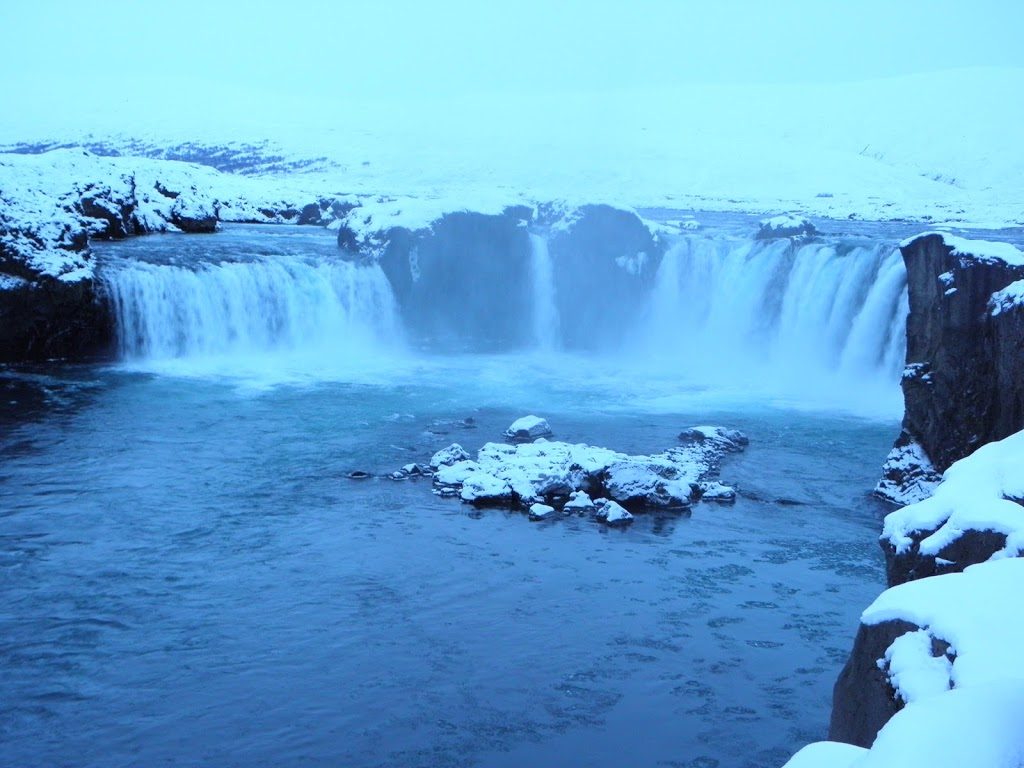
Historical Notes
“History tells us that in the year 1000, Þorgeir, chieftain of Ljósavatn district, and Lawspeaker of the Althing, was entrusted with the momentous task of deciding whether Icelanders should adopt the Christian faith. When his decision was formally accepted, he went home and threw his statues of the pagan gods into the waterfall. Goðafoss (Waterfall of the gods) is said to derive its name from this event. It is 12 metres high. Skjálfandafljót (180 km) is the country’s fourth longest river.
The lava by the waterfall Goðafoss flowed through the valley Bárðardalur in ancient times.
The lava is almost as long as the river itself and originates in the highlands by the edge of the biggest glacier in Iceland Vatnajökull.”
A thing that tickles me when I think about our visit to Goðafoss is how badly we wanted to get there at sunrise. The sun rose opposite of where we had expected it to rise. It was still a beautiful sunrise, which I’d like to mention was after 9am.
